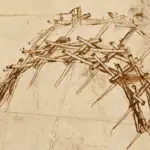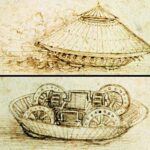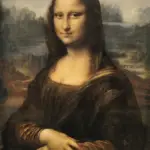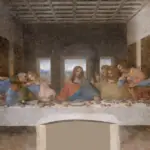Leonardo da Vinci The Last Supper
Title: The Last Supper
Year: c. 1495-1498
Size: 460 x 880 cm
Medium: Mixed technique
Location: Convent of Santa Maria delle Grazie, Milan, Italy
The Last Supper is one of the most famous artworks in history. Leonardo da Vinci painted it between 1495 and 1498. This masterpiece captures the moment Jesus shares his final meal with the 12 apostles, a significant scene for portraying a pivotal event before the crucifixion.
The Last Supper represents a crucial biblical moment and showcases Leonardo’s exceptional talent for depicting emotion and narrative through art.
This painting, located in the Convent of Santa Maria delle Grazie in Milan, fascinates art lovers and historians alike. Its dramatic composition and the apostles’ reactions to Jesus’s announcement of betrayal create a powerful visual story.
Those interested in Renaissance art will appreciate Leonardo’s use of perspective and innovative techniques, which have preserved this work’s impact over the centuries.
Whether exploring its religious or artistic aspects, The Last Supper offers much to discover. From its creation during the Italian High Renaissance to its ongoing restoration efforts, the painting continues to inspire discussions about its artistic and historical significance.
Breaking down its composition, viewers can see how Leonardo’s genius turns a simple meal into an iconic moment that has been studied and revered by many.
The Last Supper: Historical Context
Leonardo da Vinci’s “The Last Supper” is a renowned fresco that captures a pivotal biblical event. Commissioned by Ludovico Sforza, it combines artistic mastery and religious significance. It is housed in Santa Maria delle Grazie, one of Milan’s most historic convents.
Creation and Patronage
Leonardo da Vinci’s work on the Last Supper began around 1495 and was completed by 1498. The mural was commissioned by Ludovico Sforza, the Duke of Milan, as part of a larger project to renovate the church of Santa Maria delle Grazie. This involved enhancing its religious and aesthetic appeal.
The painting is in the convent’s refectory, or dining hall, chosen for its size and importance. The large walls suit the monumental scale of the composition.
Leonardo employed innovative techniques to impact visual storytelling profoundly. The scene represents Christ’s last meal with his disciples, focusing on the moment he reveals one of them will betray him.
Cultural Significance in the Renaissance
The Last Supper is of immense cultural significance, reflecting crucial Renaissance ideals. It exemplifies the use of linear perspective, capturing depth and realism. This fascination with perspective was a hallmark of Renaissance art, which aimed to bring scenes to life with accuracy and emotion.
Leonardo’s work also influences religious art, shaping perceptions of biblical narratives. The portrayal of the 12 disciples, each displaying different emotions, adds a human touch to the divine story.
The Last Supper Leonardo da Vinci created extends beyond its religious context. It reflects broader cultural shifts in art and thought during the Renaissance, focusing on realism, human emotion, and perspective. This cultural impact remains significant today.
Leonardo da Vinci
Leonardo da Vinci was a master of many disciplines, known for his astonishing artwork and inventive ideas. His painting The Last Supper, housed in Santa Maria delle Grazie in Milan, represents his artistic genius and innovative techniques.
Biographical Overview
Leonardo da Vinci was born in Vinci, Italy, on April 15, 1452. He grew up in Florence and apprenticed with the artist Verrocchio, where he honed his skills in painting and sculpture. Da Vinci was not just an artist but also a thinker, engineer, and inventor who dedicated himself to various fields.
His extensive notebooks reveal his fascination with anatomy, engineering, and the natural world. This curiosity influenced all of his works, including his approach to art and innovation.
Da Vinci worked for patrons like Ludovico Sforza, who commissioned the Last Supper throughout his life. His time in Milan was particularly fruitful, allowing him to actively explore painting, science, and engineering. His broad range of interests and studies contributed to his lasting legacy in multiple disciplines.
Artistic Contributions
Leonardo da Vinci’s contribution to art is unparalleled. He pioneered the High Renaissance style, combining scientific observation with artistic expression.
His painting techniques, especially in The Last Supper, showcase his ability to capture human emotion and narrative. This work, which illustrates Jesus’ final meal with his disciples, is celebrated for its composition and use of perspective.
Beyond The Last Supper, da Vinci created iconic works like the Mona Lisa and The Virgin of the Rocks. His art is noted for its intricate detail, innovative use of light, and realistic portrayal of subjects. These techniques continue influencing artists today, cementing da Vinci’s reputation as a cornerstone of art history.
Artistic Analysis
The Last Supper by Leonardo da Vinci is renowned for its masterful use of perspective, color, and symbolism. These elements convey deep religious themes and showcase Leonardo’s exceptional talent.
Composition and Perspective
Leonardo da Vinci employed a masterful composition in The Last Supper that highlights its dramatic narrative.
He used a one-point linear perspective, centering on Jesus, to draw the viewer’s attention. The vanishing point is directly behind Jesus’ head, emphasizing his central role in the scene.
The arrangement of the 12 disciples in groups of three creates a rhythmic balance and guides the viewer’s eye across the painting. The figures’ gestures and expressions convey emotion and tension, establishing order.
This technique can be explored further by visiting the Last Supper in Santa Maria delle Grazie in Milan, where the painting is located.
Use of Color and Light
Leonardo’s use of color and light adds depth and realism to The Last Supper.
Soft, muted tones dominate the scene, providing a serene yet solemn atmosphere.
The artist ingeniously employed chiaroscuro, a technique using strong contrasts between light and darkness, to add volume to the figures.
The play of light highlights Jesus’ figure, making him the focal point among the disciples.
Leonardo’s skillful use of color enhances the painting’s realism by reflecting the natural hues of a dining room.
Unfortunately, much of the original vibrancy has been lost due to the extensive damage over the centuries, though restoration efforts have attempted to revive it.
Symbolism and Interpretation
The Last Supper is rich with symbolic meaning, capturing a pivotal moment in Christian tradition.
Each element in the painting, including the positioning of the disciples and the items on the table, holds more profound significance.
Jesus’ open arms symbolize sacrifice, and the scattered elements on the table represent the event’s chaos.
Judas Iscariot, notably clutching a small bag symbolizing betrayal, adds to the narrative depth.
The disciples’ contrasting reactions, including surprise, doubt, and contemplation, contribute to the scene’s complexity.
This multifaceted interpretation of Leonardo’s work inspires and intrigues viewers today.
Religious Significance
(From the left to right direction:
– Bartholomew: referred to as Nathaniel
– James, son of Alphaeus: Spent three years witnessing the teachings of Jesus
– Andrew: The first disciple to be called to follow Jesus
– Peter: His name means ‘rock,’ denied Jesus thrice but repented.
– Judas Iscariot: Betrayed Jesus
– John the Beloved: The youngest disciple and Jesus’ favorite
– Jesus
– Thomas: Doubted Jesus after His resurrection
– James the Greater: The first disciple to be martyred
– Philip: A disciple from the city of Bethsaida
– Matthew: Once a tax collector before becoming a disciple
– Jude Thaddeus: Often shown with a flame around his head
– Simon the Zealot: One of the most obscure apostles)
The Last Supper is profoundly significant. It represents Jesus’ final meal with his 12 disciples, marking pivotal moments such as establishing the Eucharist and foreshadowing betrayal.
Biblical Depiction of The Last Supper
The Last Supper is detailed in the New Testament, specifically in the books of Matthew, Mark, Luke, and John.
Jesus shared bread and wine with his disciples during this event, symbolizing his body and blood. The meal occurred in an upper Jerusalem room just before his arrest.
The setting and acts performed are foundational for Christian practices, especially Communion. The narrative emphasizes themes of fellowship and sacrifice, highlighting Jesus’ teachings and the prediction of Judas’ betrayal.
The depiction underlines the gravity of events leading to the crucifixion, solidifying the Last Supper’s role as a turning point in the biblical storyline.
Theological Interpretations
Theologically, the Last Supper is seen as both an end and a beginning.
It finalized the Old Covenant through the Passover lamb and introduced the New Covenant through Christ’s sacrificial role.
It established the Eucharist, where bread and wine became a recurring sacrament, symbolizing Jesus’ enduring presence.
Leonardo da Vinci’s famous artwork, The Last Supper, portrays intense emotions and divine elements, contributing to its theological understanding.
This painting is located in Santa Maria delle Grazie, Milan. Artistic representations influence interpretations by accentuating moments of spiritual significance.
The Last Supper goes beyond just a historical moment by reflecting key theological perspectives, making it a central component of Christian faith and practice.
Conservation and Restoration
Conservation and restoration of The Last Supper have been critical in preserving this masterpiece for future generations. This painting by Leonardo da Vinci has faced significant challenges, including degradation and extensive restoration efforts.
Degradation Over Time
Leonardo da Vinci’s The Last Supper, located at Santa Maria delle Grazie in Milan, Italy, has experienced severe degradation over the centuries.
Between 1495 and 1498, the painting was vulnerable due to its choice of media and techniques. Da Vinci used oil and tempera on drywall, which was unsuitable for longevity.
Environmental factors further worsened the painting’s condition. Humidity, temperature fluctuations, and pollution led to peeling and flaking.
Additionally, the location was exposed to bombing during World War II, causing structural damage to the building and further destabilizing the mural.
Restoration Efforts
Efforts to restore The Last Supper began shortly after its completion. However, early interventions often did more harm, using aggressive techniques that removed the original material.
From 1978 to 1999, Pinin Brambilla Barcilon led a significant restoration effort that stabilized the paint and revealed hidden details.
During this process, experts carefully removed layers of dirt and previous repairs. They then used scientific analysis to match the colors with da Vinci’s original palette.
This extensive work preserved about 42.5% of the original painting, revealing hidden elements and restoring the scene’s depth and vibrance.
Today, The Last Supper attracts visitors, illustrating challenges and triumphs in art conservation.
Impact and Legacy
The Last Supper by Leonardo da Vinci remains a cornerstone of Western art. Its influence extends to various art movements, while its presence is felt in numerous facets of popular culture. Its location in the Santa Maria delle Grazie in Milan cements its importance in religious art and cultural history.
Influence on Later Art
Leonardo da Vinci’s Last Supper inspired countless artists and art movements. Its revolutionary use of linear perspective created a sense of depth that influenced artists of the High Renaissance and beyond.
For example, Raphael and Veronese adopted similar spatial strategies in their frescos.
Leonardo’s portrayal of dramatic expressions also set a standard. It emphasized human emotion in sacred art, a shift from earlier, more stoic representations. Artists aimed to capture Leonardo’s work’s narrative and emotional depth.
The painting’s fame spread across Europe, ultimately impacting art in France and Holland.
Representation in Popular Culture
The Last Supper has transcended art to become a cultural icon. Its interpretations and parodies appear in films, literature, and advertising. This prominence reflects its lasting impression on both art and society.
Often replicated, the image reflects themes of betrayal and loyalty due to its popular depiction of the 12 disciples and Judas’s impending betrayal.
Its role in modern media cements its legacy, making it accessible to a broader audience.
The painting continues to spark dialogues and portrayals in diverse formats, from digital art to street murals. This enduring legacy highlights how The Last Supper remains relevant in contemporary discussions of art and culture.
Controversies and Debates
The Last Supper by Leonardo da Vinci has sparked numerous debates over its authenticity and interpretative meanings. These controversies often center on the accuracy of its depiction of biblical events and the varied interpretations of its rich symbolism.
Authenticity Issues
The authenticity of The Last Supper is questioned. Over the centuries, multiple restoration attempts have been made on the painting, each altering da Vinci’s original work.
Many argue these efforts have compromised its authenticity, questioning how much of the original piece remains.
Experts also debated da Vinci’s techniques, including experimental methods that made the painting susceptible to damage over time.
Some believe these methods partly contributed to the painting’s rapid deterioration. The ongoing conservation efforts aim to preserve what remains while managing the challenges of maintaining its integrity.
Interpretative Variations
Scholars and art enthusiasts interpret The Last Supper in various ways. Some focus on the unique composition and how da Vinci used linear perspective to direct attention to Jesus.
Others examine the portrayal of the 12 disciples, each exhibiting distinct emotions and gestures. These details invite varied interpretations about their relationships and roles during the pivotal moment in the biblical narrative.
Additionally, elements like the choice of foods and table setting have been analyzed for hidden meanings and theological implications. These details continue to captivate those who study the painting, leading to ongoing debates about the true messages encoded by da Vinci.
Where is The Last Supper Painting Located?
The Last Supper is one of Leonardo da Vinci’s most famous works. It is housed in a historic location in Milan, where visitors can view it in its original setting.
Santa Maria delle Grazie
The Last Supper is held at the Dominican convent of Santa Maria delle Grazie in Milan, Italy. This convent is a UNESCO World Heritage site, highlighting its cultural and historical importance.
The painting is displayed on the refectory wall, offering a direct view to those in the dining hall.
Santa Maria delle Grazie was initially commissioned by Ludovico Sforza, the Duke of Milan, to house the painting. The fresco depicts Jesus and his 12 disciples during the Last Supper, the Bible’s pivotal moment.
This setting is significant as it maintains the context in which Leonardo intended the painting to be viewed.
Public Exhibition and Viewing
Visitors can experience The Last Supper only through reserved tickets, as visitor spots are limited. This system is essential to preserving da Vinci’s Last Supper painting, which has undergone extensive restoration.
Tours offer insights into the painting’s techniques and the significance of its elements. Usually, groups can view the fresco for about 15 minutes, ensuring the room’s climate remains stable to protect the artwork.
If you plan to visit, it is recommended that you check availability and book in advance. The official museum site provides more details on viewing The Last Supper.
Who Cooked in The Last Supper?
The Last Supper is significant in religious traditions and art history. While Leonardo da Vinci’s painting, found in the Santa Maria delle Grazie in Milan, Italy, brilliantly depicts Jesus and his disciples, it does not explicitly show or address who prepared the meal.
Da Vinci’s depiction focuses on the dramatic moment Jesus announces that one of them will betray him, not the meal’s preparation.
In the context of the Bible, the Last Supper, described in the gospels of Matthew, Mark, Luke, and John, is often referred to as a Passover meal. However, the texts do not specify who cooked the meal.
This tradition involves partaking in unleavened bread and wine, symbolically important to Christians worldwide.
Rosalind Miles’s book, “Who Cooked the Last Supper: The Women’s History of the World,” explores the often overlooked roles of women throughout history. While her work does not explicitly address this event, it broadens the discussion about women’s contributions in historical contexts.
It suggests that women’s roles, including meal preparation, have frequently been undervalued and underrepresented.
For those intrigued by this event’s cultural and artistic depictions, exploring different paintings and interpretations offers a deeper insight. The variety of depictions highlights different perspectives on this significant moment in history.
Those interested can visit the Last Supper painting at the Santa Maria delle Grazie in Milan, Italy, to view da Vinci’s masterpiece in person.
Why is The Last Supper Painting Important?
The Last Supper is a groundbreaking work by Leonardo da Vinci, painted from 1495 to 1498. It is housed at the Santa Maria delle Grazie in Milan, Italy.
This masterpiece is vital due to its innovative use of linear perspective, which gives the painting a sense of depth and realism.
Leonardo’s interpretation of the biblical story featuring Jesus and the 12 disciples captures a pivotal moment: Jesus announcing his betrayal. This emotional intensity adds to the significance of the painting.
The lifelike expressions and movements make the story engaging and dynamic.
Due to its fragile condition, The Last Supper has faced restoration challenges. Efforts to preserve the painting have highlighted its delicate beauty.
Santa Maria delle Grazie remains a must-visit for art lovers interested in Leonardo’s work.
Leonardo showcases his mastery with intricate details. The food depicted is more than bread and wine; it offers insights into the cultural aspects of the period.
Light and shadow emphasize the characters and add depth to the scene.
Art historians often study paintings’ technique, composition, and symbolism, which have influenced artistic styles for centuries.
The portrayal of disciples reacting to Jesus’ words reflects a deep understanding of human emotion and sets new standards for narrative painting.
Leonardo’s ability to blend art and storytelling has made The Last Supper a timeless work that has inspired admiration and study across generations.
Educational Use
The Last Supper by Leonardo da Vinci is a rich subject for academic research and art education. This masterpiece illustrates technical brilliance and offers insight into religious and cultural contexts.
Academic Research and Study
Researchers often study the Last Supper painting to understand Leonardo’s techniques to depict Jesus and his 12 disciples. The original painting is at Santa Maria delle Grazie in Milan, Italy.
Scholars analyze its themes of religious symbolism and perspective. By studying the relationship between the figures, academics gain insights into the narrative of betrayal and unity that the scene depicts.
It is a valuable resource for exploring the intersection of art, religion, and history.
Teaching Renaissance Art
Teaching about da Vinci’s Last Supper provides students with an understanding of Renaissance techniques.
The painting is notable for its use of linear perspective, which gives depth to the composition.
Educators can engage students by creating hands-on activities, such as reimagining the scene using different art styles. These exercises teach students about using light, shadow, color, and cultural and historical contexts.
Final Thoughts
The Last Supper is of immense significance in Christian theology. It marks a pivotal moment when Jesus shared his final meal with his disciples, symbolizing sacrifice and devotion.
During this meal, Jesus introduced practices central to Christian worship. He broke bread and shared wine, instructing his followers to do this in remembrance of him. This established the foundation for the Eucharist, a core element of the Christian faith.
The narrative of this gathering, documented in various Synoptic Gospels, provides insight into Jesus’ teachings. He prepared his disciples for his impending crucifixion and the betrayal that would follow, showing his foresight and acceptance of his destiny.
Judas’ betrayal added a layer of complexity and emotion to this event. Despite knowing of the impending betrayal, Jesus responded with compassion and forgiveness, illustrating a powerful lesson of grace amid adversity.
Key Takeaways:
- The Last Supper signifies Jesus’ last moments with his disciples, highlighting themes of sacrifice and love.
- Practices such as the Eucharist stem from this event, serving as enduring symbols of faith and remembrance.
This session foreshadowed the events, building a bridge to understanding the betrayal and its spiritual implications.
Frequently Asked Questions
The Last Supper is a renowned Leonardo da Vinci painting and a significant event in the Christian tradition. This section covers its location, meaning, and key figures.
Where is the original Last Supper located?
The original painting of The Last Supper is located at the Santa Maria delle Grazie in Milan, Italy. It’s a significant piece created by Leonardo da Vinci during the late 15th century.
Where did the actual Last Supper take place?
The actual Last Supper is believed to have taken place in Jerusalem. It was a Passover meal that Jesus shared with his disciples.
Can you visit the place where the Last Supper was?
Visitors can see the Cenacle, the traditional site of the Last Supper, in Jerusalem. However, its authenticity and exact location are debated.
Can you see the actual Last Supper painting?
The actual painting can be viewed at the Santa Maria delle Grazie. However, strict measures are in place to preserve it due to its age and fragility.
What is the story of the Last Supper?
The Last Supper is the final meal Jesus shared with his disciples. During this meal, he revealed that one of them would betray him, which aligns with Christian beliefs about his crucifixion.
Who are the 13 people at the Last Supper?
The 13 individuals depicted include Jesus Christ and his twelve apostles. Judas Iscariot, who betrayed Jesus, is prominently featured.
What is the meaning of the Last Supper painting?
The painting captures the moment Jesus predicts his betrayal. It is notable for visually expressing the varied reactions of his disciples to this announcement.
Where is the real Last Supper painting?
The original painting is housed in the Santa Maria delle Grazie, Milan. This iconic artwork is a significant attraction for art enthusiasts and religious pilgrims.
Who is the woman in the Last Supper?
The traditional accounts of The Last Supper do not include a woman. Some interpretations, popularized by fiction, mistakenly suggest a female figure, but this lacks historical backing.
What words did Jesus say at the Last Supper?
During the Last Supper, Jesus said, “This is my body,” and “This is my blood.” He was breaking bread and sharing wine with his disciples. These words are central to the institution of the Holy Communion.
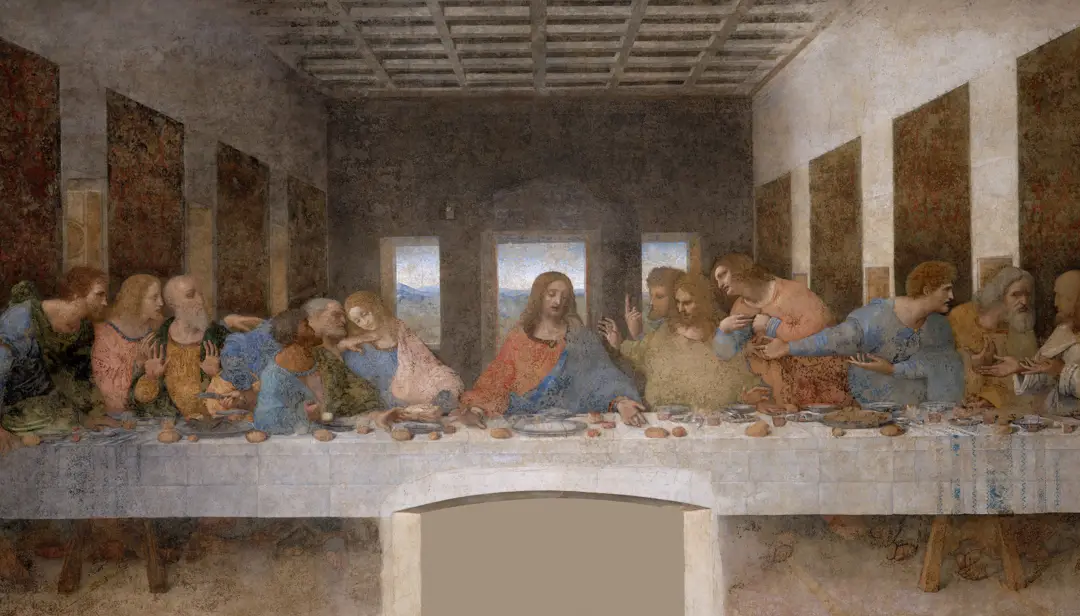
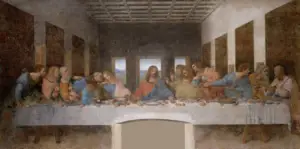
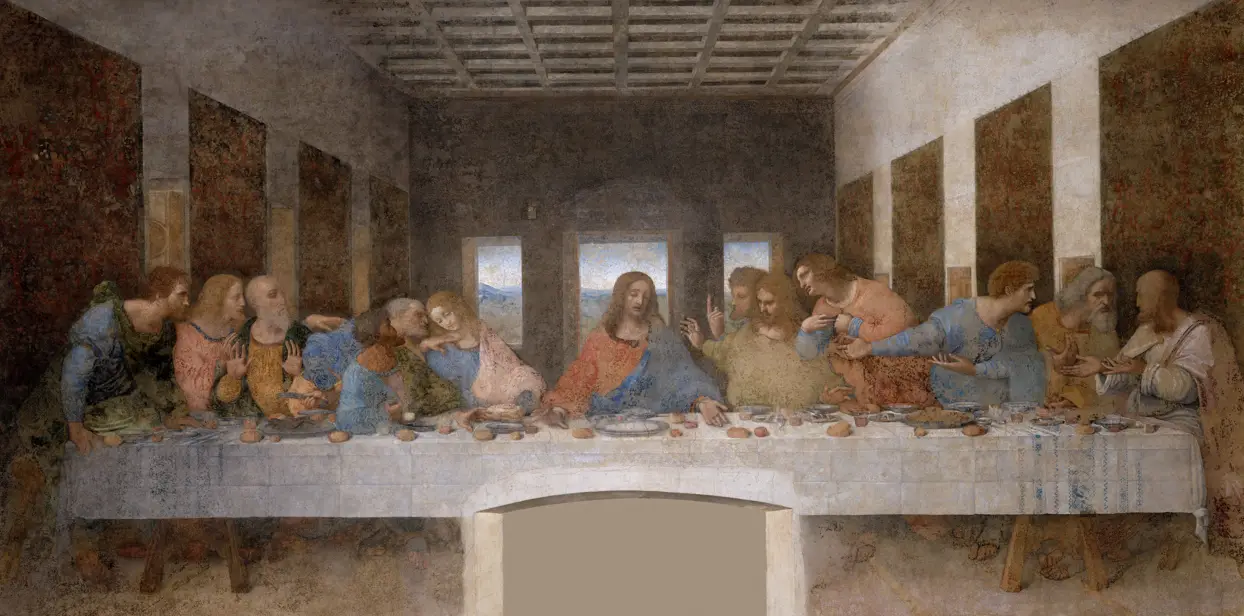
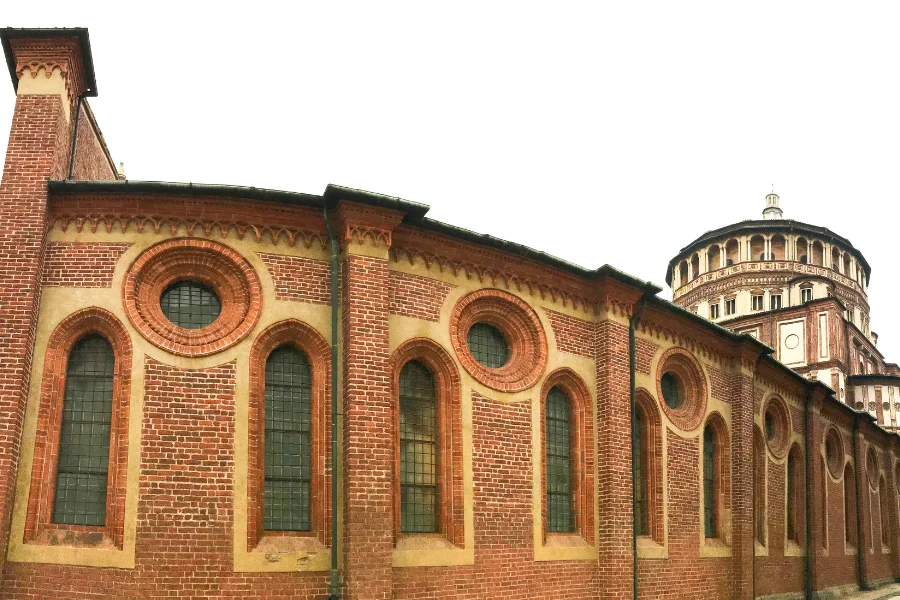
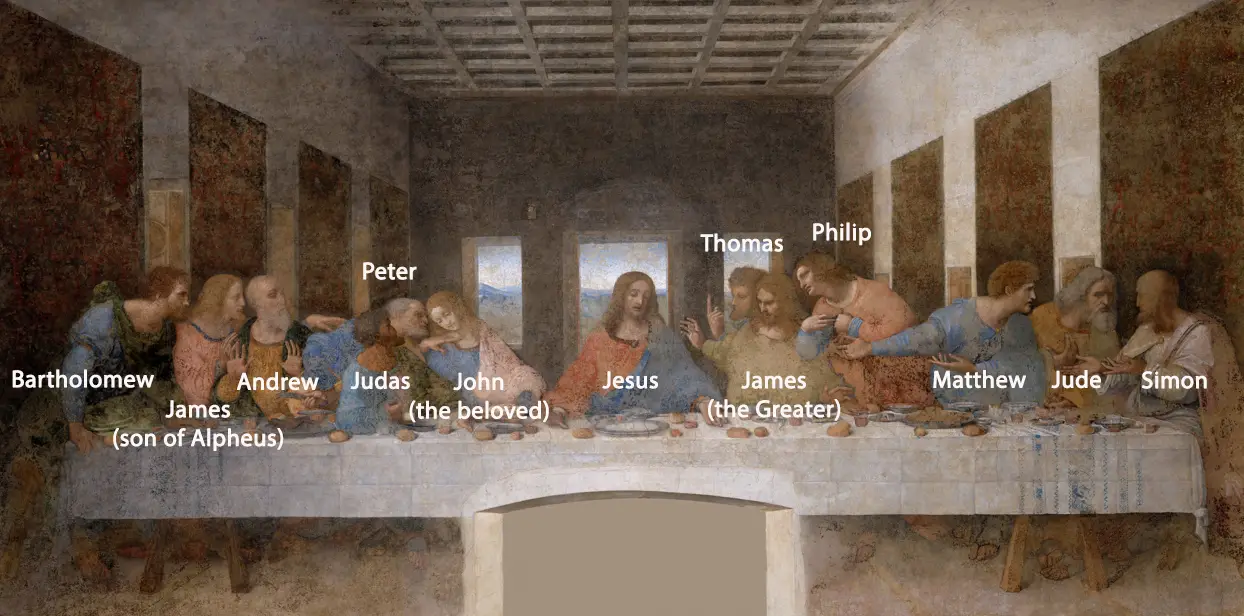
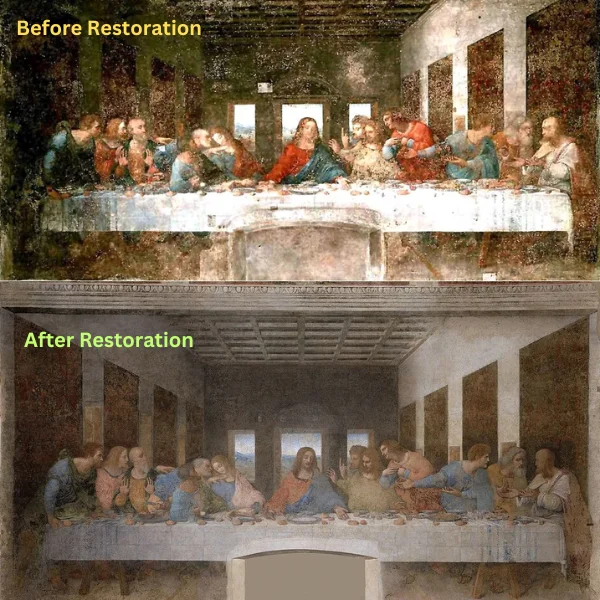
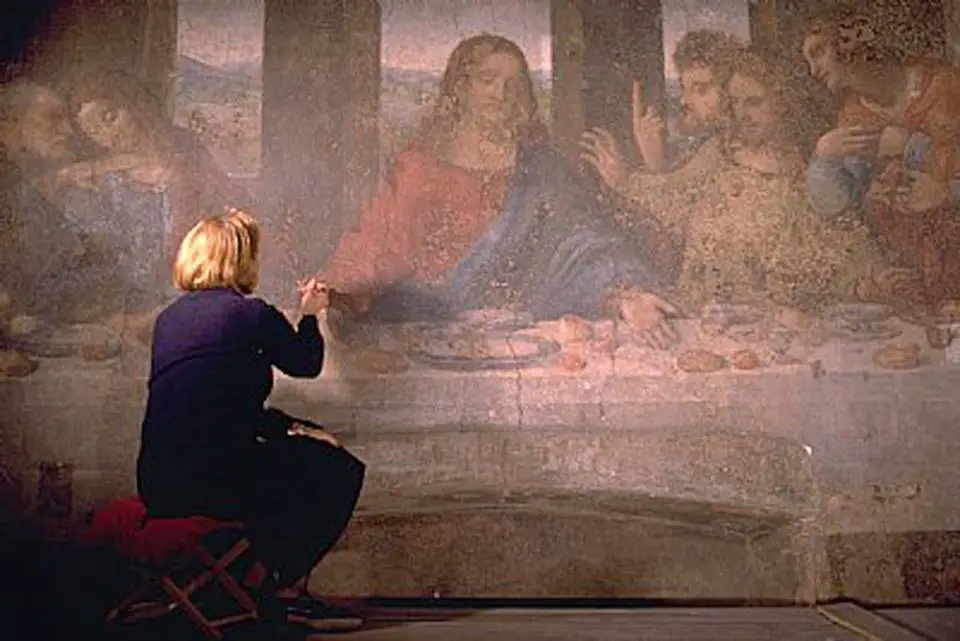
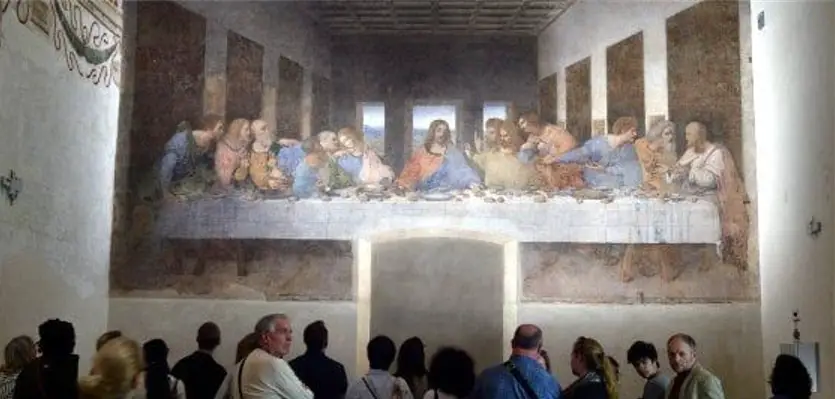
 I’m Leonardo Bianchi, the mind behind Leonardo da Vinci's Inventions. Thanks for visiting.
I’m Leonardo Bianchi, the mind behind Leonardo da Vinci's Inventions. Thanks for visiting. 